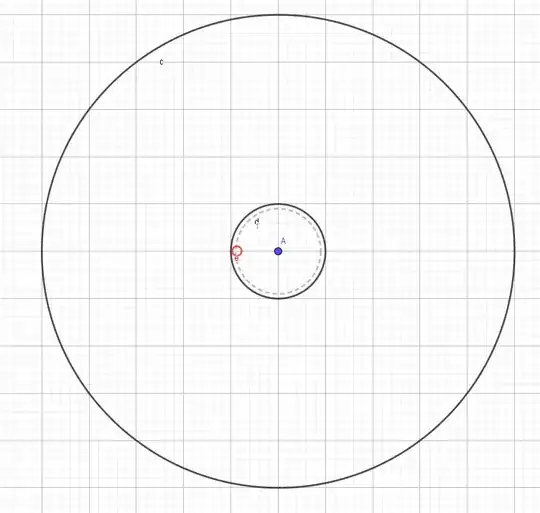In the center of a rounded table with a radius of 50cm, there is a smaller circle with a radius of 10cm. A coin with a radius of 1cm is thrown on the table. Assuming that it will always land on the table, what is the probability that the entire coin will be inside the smaller circle?
To start with, I have plotted this situation using GeoGebra:

Since that coin has a radius of 1cm, I have plotted another circle with a radius of 9.
The area of the big table is $50^{2}\pi$ , while the areas of the smaller circles are $10^{2}\pi$ and $1^{2}\pi$ respectively.
My intuition say that the probability should be
$$\frac{9^{2}\pi}{50^{2}\pi} =0.0324$$
but I can't explain it. Am I correct ? What is the mathematical reasoning ?